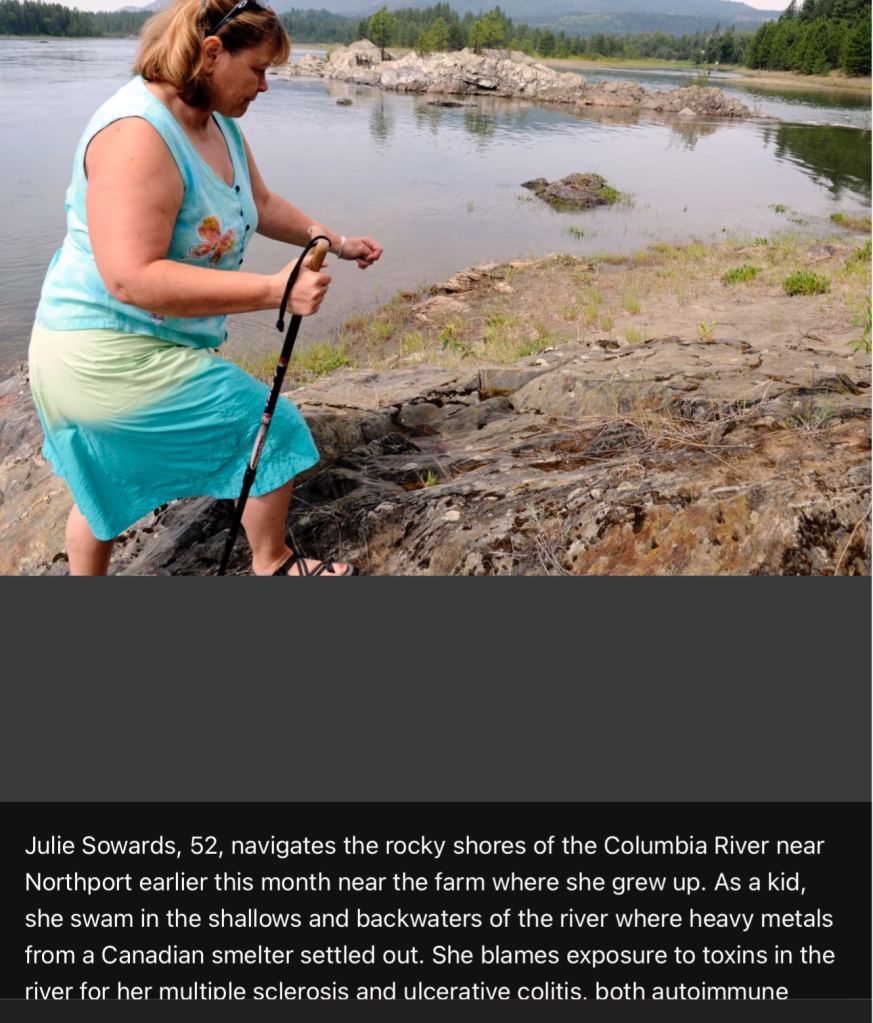
Colville Tribes unhappy with Canadian mining company’s cleanup efforts
Tribe: Lake Roosevelt pollution study is inadequate, EPA hasn’t done its job
By K.C. Mehaffey
World staff writer
Friday, May 13, 2011
NESPELEM — Five years after a Canadian mining smelter agreed in a historic settlement to assess the impact of its pollution in U.S. waters, an American Indian tribe is calling the effort inadequate, and Washington state officials say they’re not fully satisfied.
The Confederated Tribes of the Colville Reservation also say the U.S. Environmental Protection Agency hasn’t done its job to oversee Teck Cominco American’s analysis of environmental damage in the upper Columbia River and Lake Roosevelt.
A company official said the complexity of the study makes it difficult to come up with sampling plans that please everyone.
The company’s lead and zinc smelter in Trail, B.C. — about 10 miles north of the U.S. border with Canada — dumped millions of tons of toxic slag and heavy metals into the Columbia River in Canada, according to an initial investigation by the EPA. Over the course of 100 years, some 10 million to 20 million tons of it ended up in Lake Roosevelt, a 100-mile reservoir created by Grand Coulee Dam which borders the Colville Indian Reservation, the EPA found.
The June 2006 settlement between the EPA and Teck marked the first time a Canadian company agreed to fund an analysis of the public and environmental damage caused by pollution that traveled from Canada to the United States. The Colville Tribes, joined by the state of Washington, sued to hold the company liable for cleanup costs in a case pending in U.S. District Court in Spokane.
After the agreement was struck, the Colville Tribes said it had reservations about letting the company assess damages. Now, it says, their fears of inadequate work are coming true.
“Teck has delivered deficient work plans and sampling plans to EPA, which make it unlikely that the company can accurately determine the nature and extent of the pollution in the Columbia,” said John Stensgar, chairman of the tribal council’s natural resources committee. He also said EPA has not adequately enforced the agreement, and the tribe has been left out of the decision-making process about the study.
Dave Godlewski, Teck’s vice president of environment and public affairs, disagreed. “It’s been a very, very robust oversight process that the EPA is involved in, and the tribes and state are directly paid by us for their participation,” he said.
He said the company has spent more than $40 million on the study so far, analyzing 2,400 fish, conducting three rounds of surface water samples and taking soil samples from beaches around the 100-mile long lake. Last year, the company removed about 6,000 yards of material from Black Sand Beach near Northport deomonstrating they’re serious about taking care of problems they caused, he said.
EPA officials met with the state and tribe in Seattle last week. “We recognize that the stakes here are significant for a lot of parties, but in particular for the tribe,” said Dan Opalski, head of EPA’s Superfund Office in Seattle. “We’re talking about the health of the environment in and around their homeland,” where tribal members fish, gather food and recreate, he said.
Opalski said a final assessment will not be finished until 2015 at the earliest. He said the agency will not compromise quality in order to get the work done sooner.
Mike Hibbler, the state Department of Ecology’s regional manager for the toxic cleanup program, said the state does share some of the tribes’ concerns, “We have reviewed everything submitted to us, and in some cases we had some pretty serious comments. In other cases, we found the work was appropriate,” he said.
He said he is optimistic after last Friday’s meeting with the EPA. “I felt like we made some progress.”
K.C. Mehaffey: 997-2512
mehaffey@wenatcheeworld.com





Leave a Reply/Comment